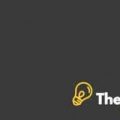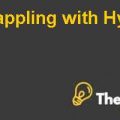Background
Wenbei Li incorporated 5 Fortune Companies in 1998 at Yunnan, China. The company consists of two herbal cuisine restaurants, one store which sells clothes and ethnic embroideries, an exhibition room for oil paintings, Chinese painting, painting frames and modern decorative painting and a self-owned brand of Ramie cotton clothing design and production.
In 2012 Li sold this company and migrated to London, here she wanted to become an entrepreneur. To accomplish this dream she intended to open a Chinese restaurant in Ontario, London.
She also has an intention to promote Chines cuisine culture in London and to provide a platform at where people can exchange Western and Eastern cultural values hence to fulfill this dream she intends to convert the restaurant into a franchise of Yunnan cuisine in future.
However, the main problem which is faced by Li is that the financial viability of this project is uncertain therefore she is alittle bit confused. In this report we make arecommendation to Li about the start-up of this restaurant. To make a recommendation we evaluate this project using different methods.
Quantitative Analysis:
Balance Sheet using Alternative of Financing:
Overview:
Li estimates that at the start-up of the restaurant she will need approximately $840000. Li and her family have half of this required fundshowever the other half has to be managed. Li identifies two alternatives which can be used to obtain the required funds.
First is that she may obtain funds from her family friend who lives in Toronto. Li’s friend has some experience in restaurant business along with this Li and her family trust him. The other option is that Li may obtain a mortgage bank loan for the residual amount of the 420000.
The balance sheet under both of the options are as follows:
Equity Finance
Assets
Land And Building 570000
Renovation and equipment 170000
Furniture 40000
Working Capital 50000
Total Assets 830000
Equity and Liabilities
Common Stock 840000
Retained Earnings -10000
Liabilities 0
Total Equity and liabilities 830000
Debt Finance
Assets
Land And Building 570000
Renovation and equipment 170000
Furniture 40000
Working Capital 50000
Total Assets 830000
Equity and Liabilities
Common Stock 420000
Retained Earnings -10000
Liabilities 420000
Total Equity and liabilities 830000
Conclusion:
Whichever financing option is chosen by the company the assets side of the balance sheet will remain same. However the equity and liability side under both options will change if company choose first option (equity finance) then the total value of the equity will be $830000 while the liability side of balance sheet will be zero however if company choose second option (debt finance) then the value of common stock and equity will be 410000 and 420000 respectively. In computing balance sheet we treat working capital as the current asset while start-up cost has been expense out in the income statement and as at the start company will not have any income, therefore, this amount will be considered as the net loss and transfer in the retained earnings.................
This is just a sample partial work. Please place the order on the website to get your own originally done case solution.










